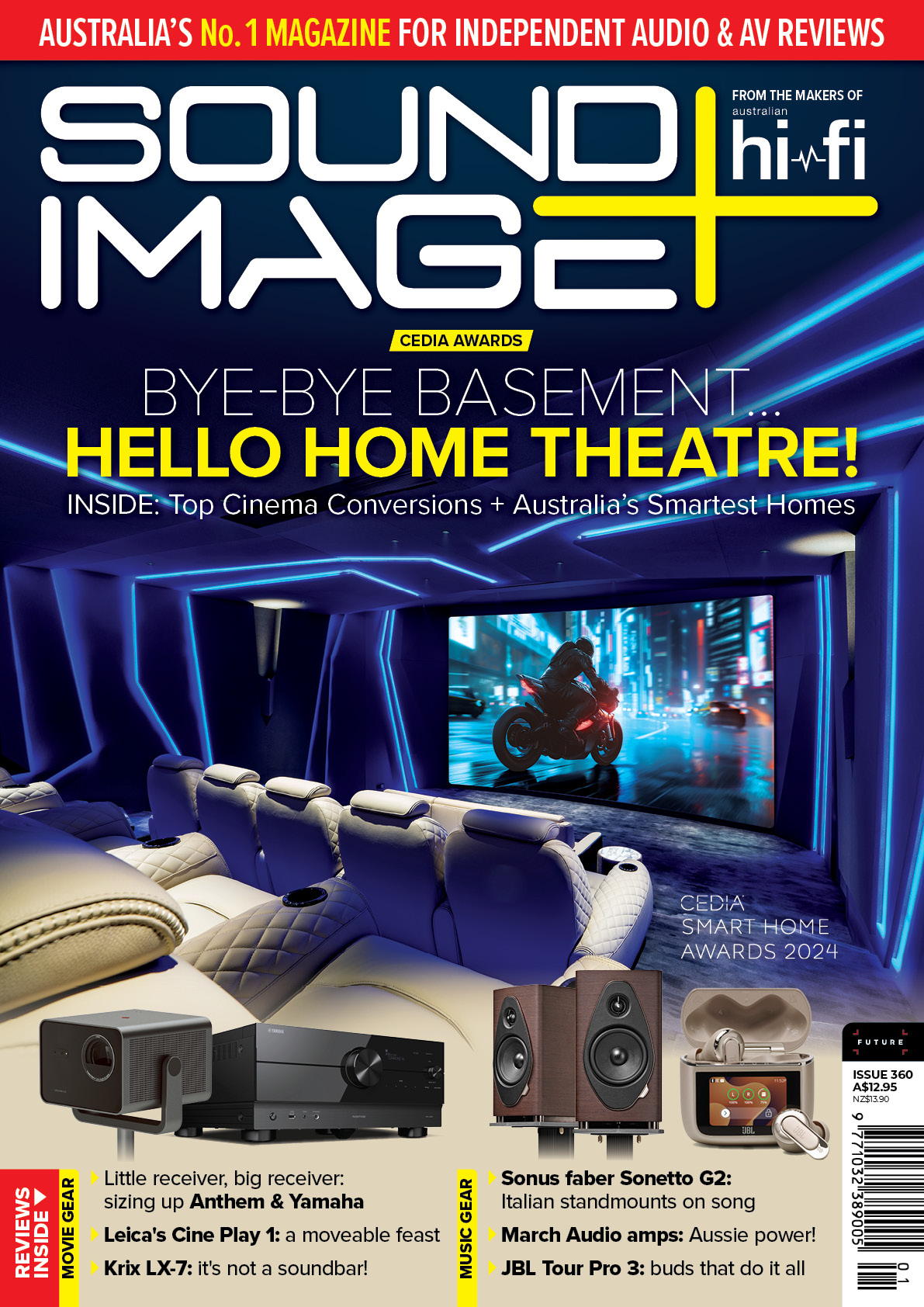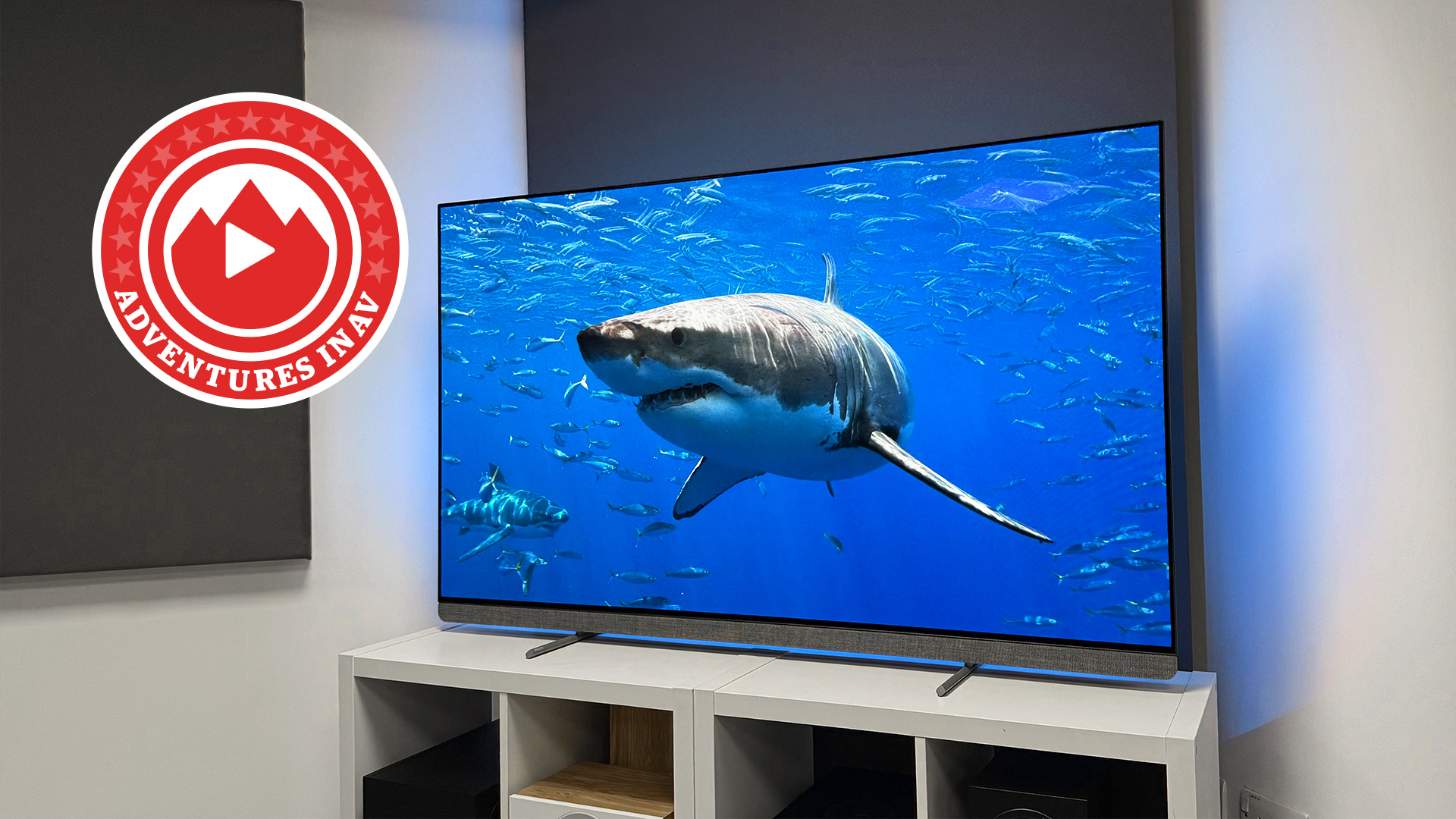Aussie hi-fi rooms: A music haven for digital and vinyl
It’s the shape of hi-fi today: vinyl replay, coupled with digital streaming and file replay.
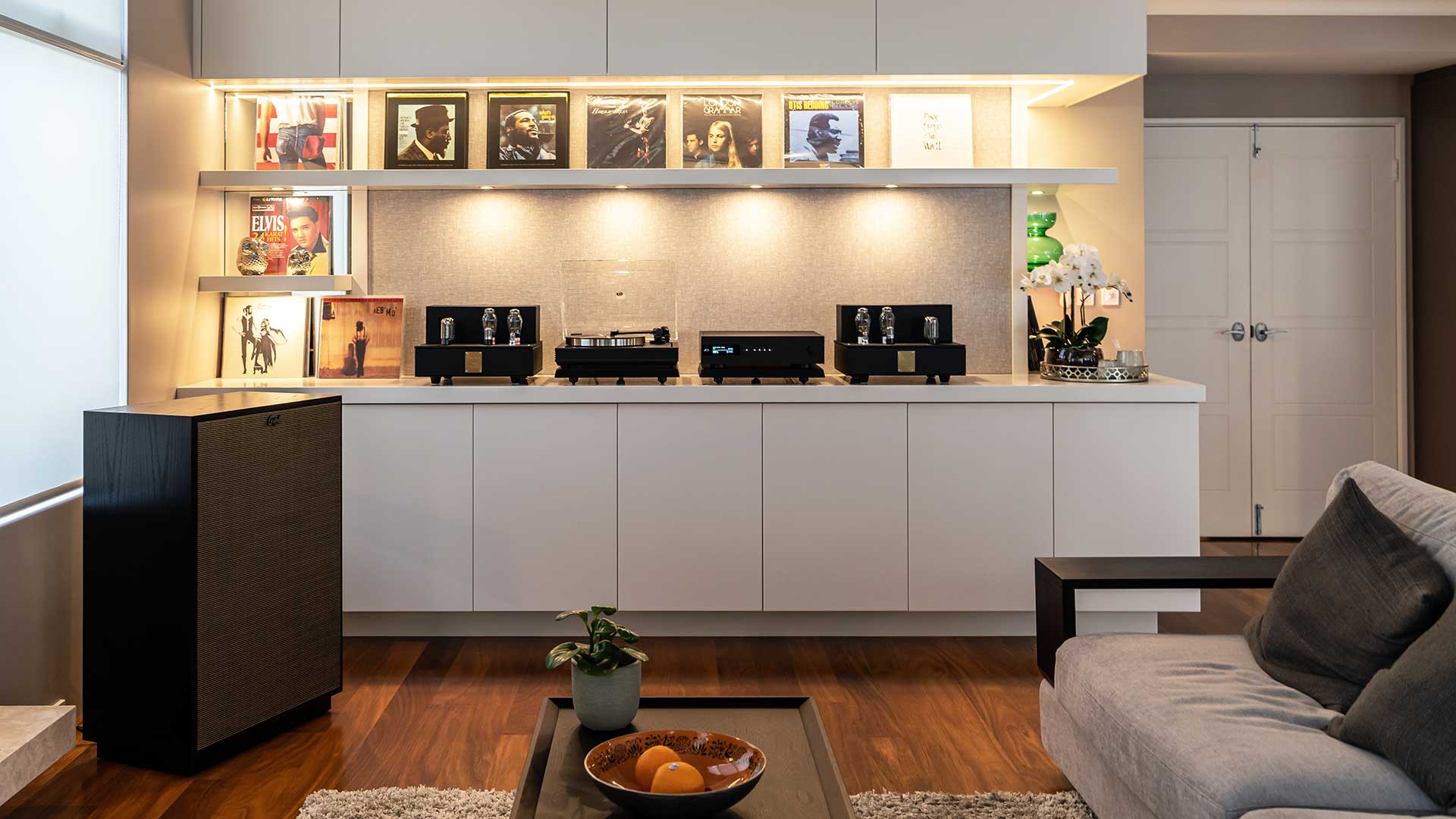
Here’s a fine-looking stereo installation in Western Australia which has been comprehensively upgraded by Frank Prowse Hi-Fi in Perth from an original CD-based system to add vinyl replay – but which also evolved in the process to add Roon-controlled digital streaming.
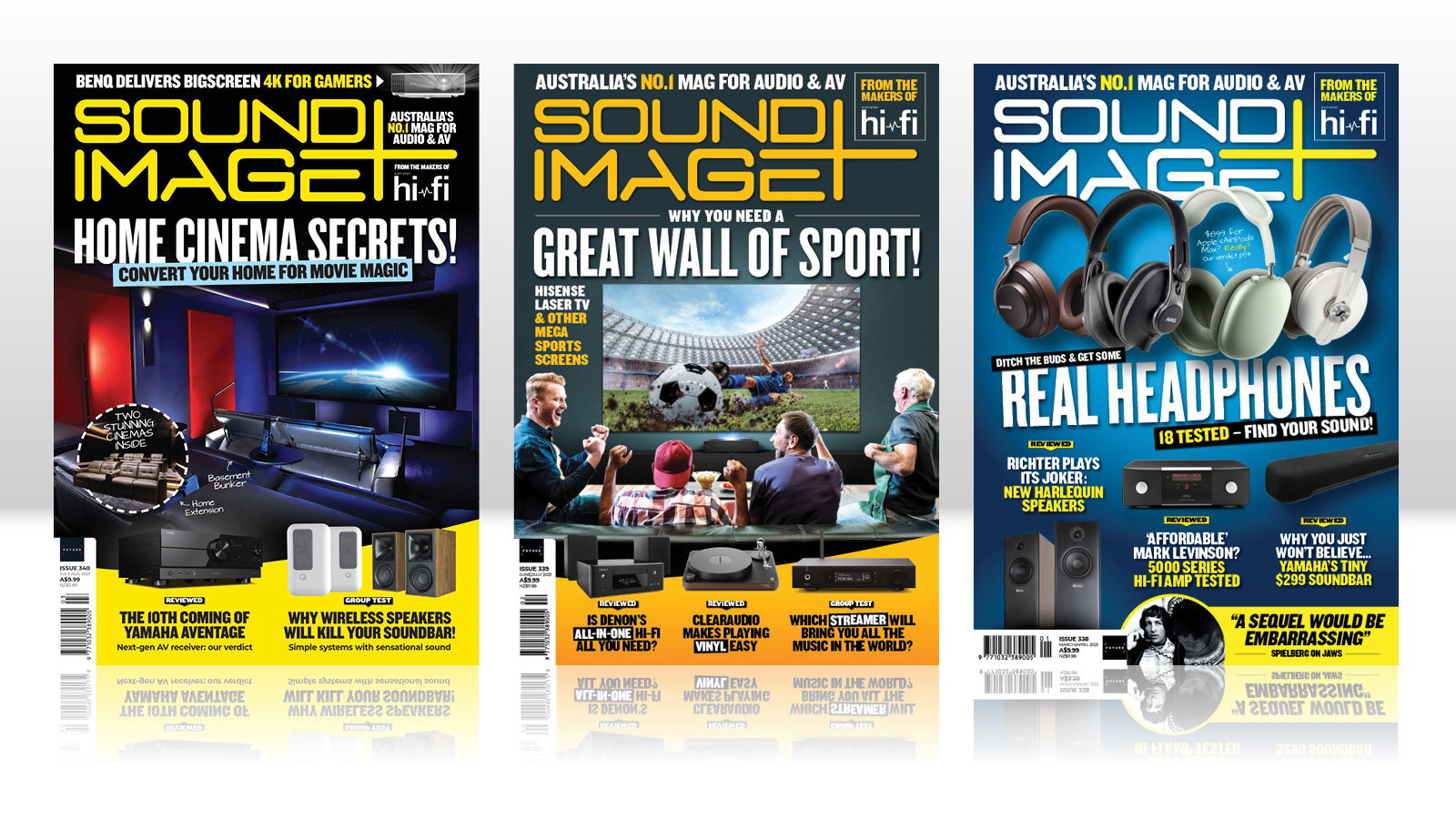
This feature originally appeared in Sound+Image magazine, one of What Hi-Fi?’s Australian sister publications. Click here for more information on Sound+Image, including digital editions and details on how you can subscribe.
This final combination of turntable and digital streaming seems to be the synthesis of a thoroughly modern music solution, as we suggested to Mark Hyland, Audio/Visual Consultant at Frank Prowse Hi-Fi.
“We think so, yes,” he replies. “Simplicity counts for a lot too. Vinyl has been strong for a number of years now, so any idea that it’s a fad is false. And it’s great to see people liking the idea of having a music collection they can curate.
"Meanwhile streaming quality has really come into its own especially in the last few years, and with services like Tidal and Qobuz in many cases offering better-than-CD music, it bodes well for the future where both vinyl and digital audio can co-exist and complete the hi-fi circle.”
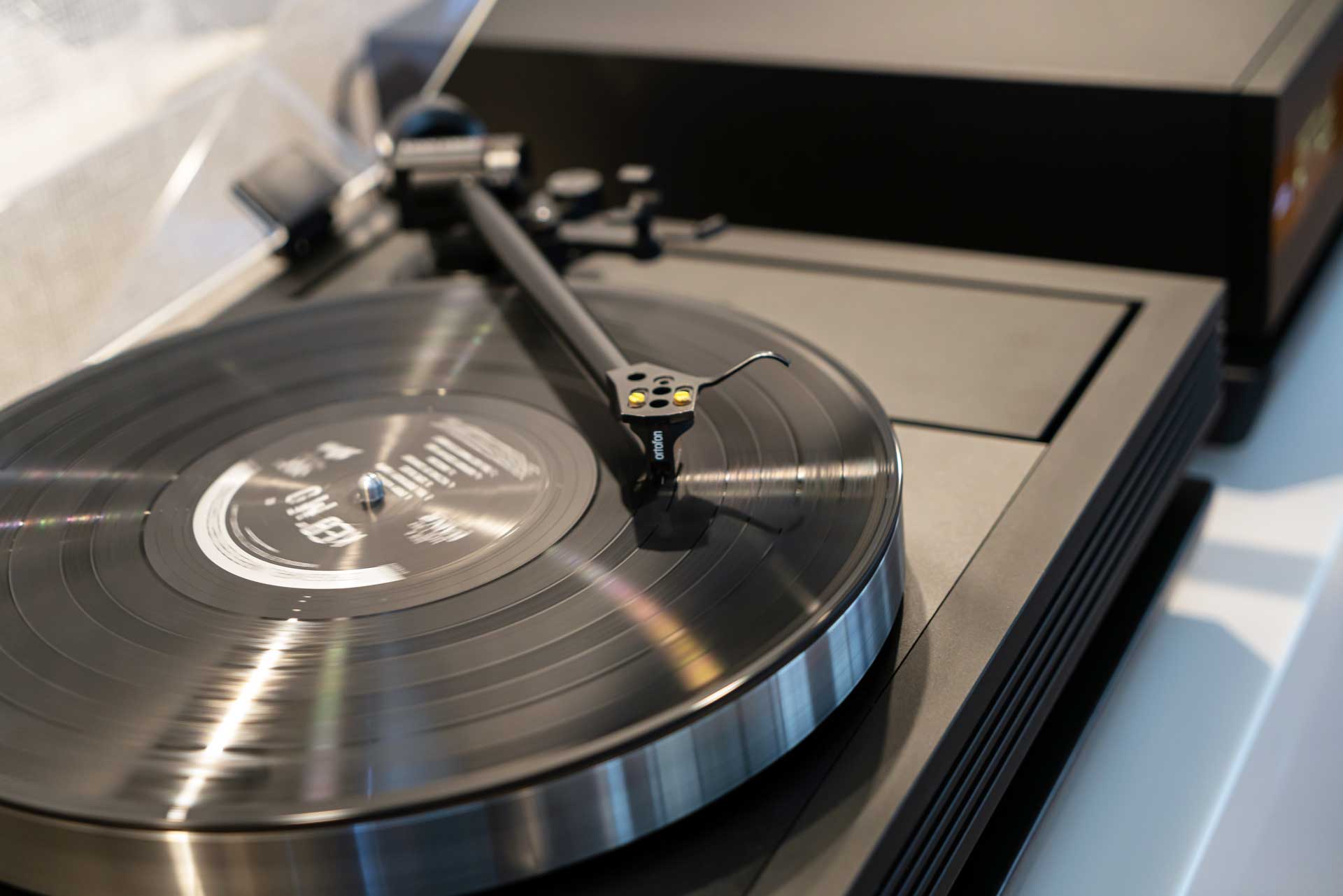
Adding analogue
This customer already had a CD-based system playing in this area, the main open-plan hub of the home – a split-level area incorporating kitchen, dining and living areas “including high ceilings with lots of space and glass”, notes Mark.
“The client originally came to us to discuss turntables – our reputation at Frank Prowse Hi-Fi is firmly based in two-channel stereo, when others may have put their eggs predominantly in the home theatre channel!” he says.
“Electronics in their existing system incorporated locally-made tube pre/power amps and a DAC by Audio Synergy legend Clifford de Souza, the primary music source being CD.”
The latest hi-fi, home cinema and tech news, reviews, buying advice and deals, direct to your inbox.
Obviously any turntable chosen would have to be on a par with the rest of the system for quality. But with the living space already completed, there was another key requirement which proved to be initially tricky during the last year of global stock issues from virus-related shut-downs around the world.
“Yes, the turntable had to be black, to match the existing equipment,” says Mark. “And we floated a few options, but stock issues were a real problem – every option we considered was out of stock, with long or uncertain wait times due to the pandemic.
"But fortunately the hi-fi community here in Western Australia is a tight-knit one, and an opportunity came for the client to purchase a complete Mober-designed LP12. Edmund Chan rarely builds a complete turntable to sell. [Mober’s more usual line is in LP12 upgrade parts, from DC speed control units to subchassis.]
"So this was a unique opportunity for the client, and as I had previously done set-up and basic service on this unit, I was more than happy to give it my seal of approval.”
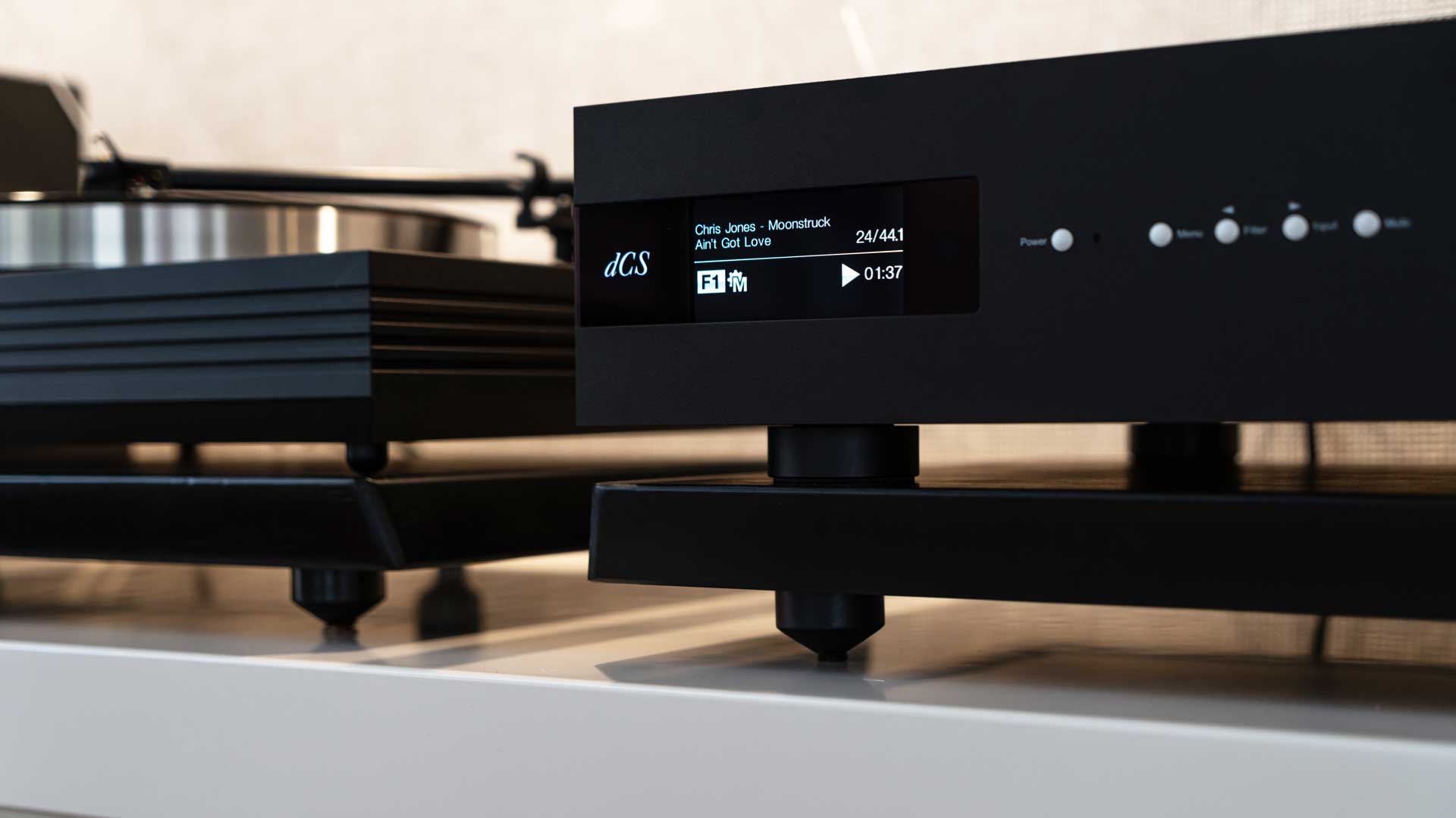
Digital expansion
The upgrade might have stopped there, with just a suitable phono preamp required to feed the client’s existing amplification. But with a relationship now formed, the conversation turned towards other paths to music.
“Our staff don’t discriminate when it comes to music,” says Mark, “so the idea of analogue or digital, cloud or LAN streaming, CD or tape being better is a little irrelevant. It’s music that drives us – the source is just a delivery method.
"That said, Roon has made the interface between digital music and the listener so much more engaging than, say, UPnP, which merely offers an uninspiring folder-browser solution – there’s no engagement compared with Roon, which leads you on a musical journey.
"Add the ability to bring all those other ecosystems into one piece of software seamlessly, and it’s pretty potent. And easy — we’re always amazed when we hand an iPad to a customer in-store and see them experience Roon first-hand. They just ‘get it’.”
So the brief was expanded to incorporate Roon and integrate it into the existing system.
“As the Core would be away from the rest of the equipment, that decision was easy – our go-to is Roon’s own hardware, the Nucleus. So then we needed a streamer, ideally one that was almost invisible within the system, and as the client had a DAC already, we suggested the dCS Bridge, which is a stunning, no-compromise streaming component that would feed digital out to the client’s existing DAC.
"But it turned out that the DAC, more than a decade old, was using a particular chipset that was having a hard time locking onto the various sampling rates fed from the dCS, so two scenarios presented themselves: either upgrade the DAC, or upgrade the streamer. We all agreed the logical step was to consolidate both into one product, so we replaced the dCS Bridge for the company’s Bartók DAC/streamer.”
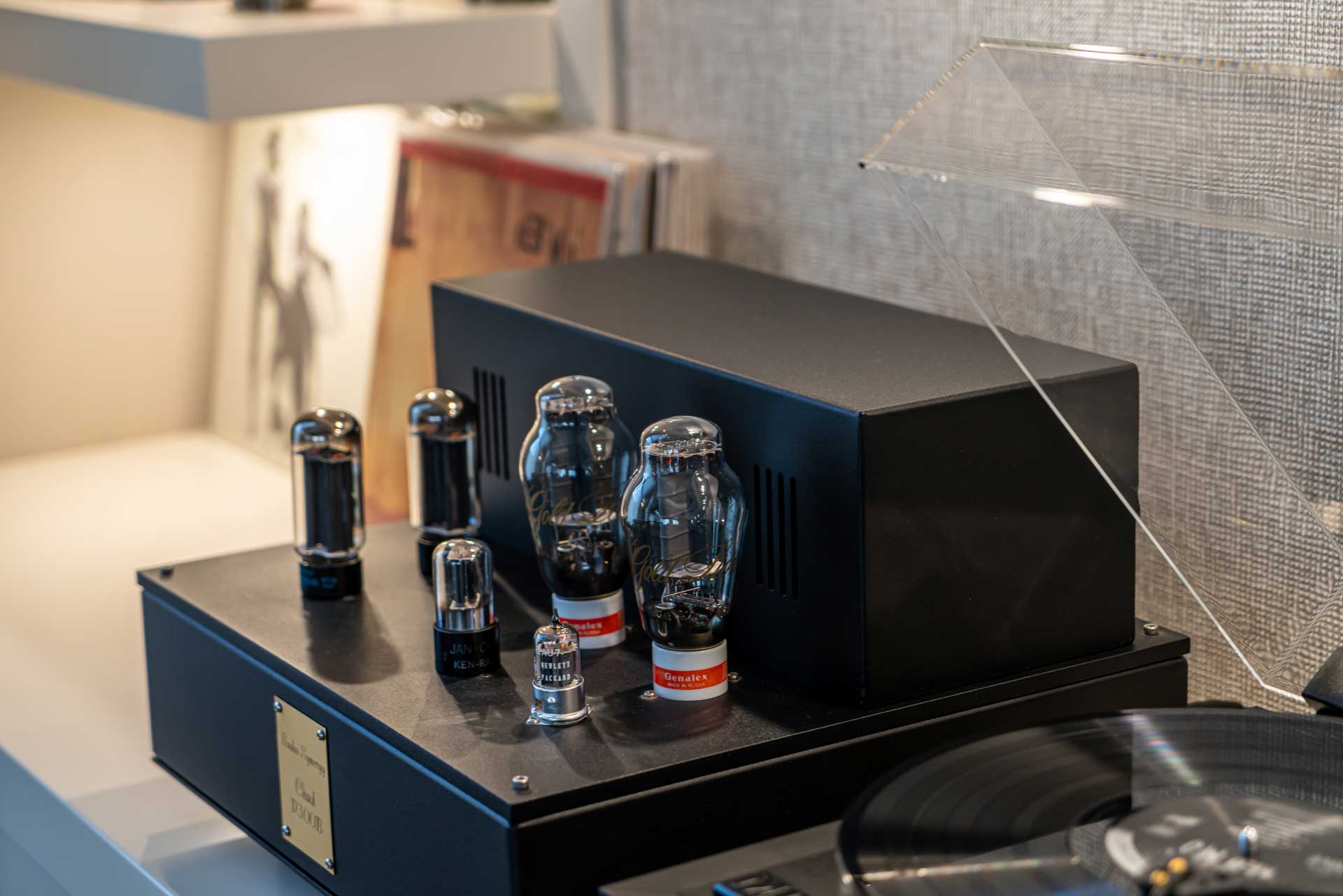
A relaxed approach
Frank Prowse Hi-Fi has been around for more than 30 years, and Mark Hyland says their success is based on being a relaxed ‘non-pushy’ store without any hidden agenda.
“That means we’re able to achieve the best results we can for our clients, based on all the usual factors – budget, space, requirements and so on,” he says. “We approach each proposal as our own challenge with those parameters, and from there we scale up or down based on how comfortable the client feels about the recommendations.
"It’s also important for us to have great relationships with our distribution network – we need to be sure they are there for us if and when called upon. David [Prowse] has been working in the industry for almost 40 years, and Frank had been in the business almost since its inception in the UK.
"Their passion for both the hi-fi and home theatre industry has seen the business grow from strength to strength, with the team moving into our brand-new Nedlands showroom in early 2009. In addition to some of the best brands in the world, we also offer consultancy, service and repairs – and we reach beyond Western Australia, with clients also interstate, in some cases international!”
And how did this system end up sounding?
“The Roon and dCS solution elevated the digital side of things to being on par with the vinyl config,” says Mark. “Not better or worse, just different, and an extraordinary level for both sources.
"Despite a limited capability to deploy more acoustic treatment in this potentially difficult split-level space with high ceilings – lots of space and glass! – the system is incredibly cohesive and engaging. It’s one of the best-sounding systems we’ve experienced at any price point, and it offers fantastic synergy within the living space.”
And has the owner considered using Roon to feed other areas of the home?
“No plans at this stage,” says Mark. “The main open-plan hub is such an inviting space that it becomes the destination for music listening rather than having lesser secondary or third systems on the periphery around the home.
"But yes, with a Roon Nucleus forming the backbone of all local and online streaming content in the home, this opens up any protocol the client wants or needs [AirPlay, Chromecast, Sonos] to be fully compatible. So we will see!”
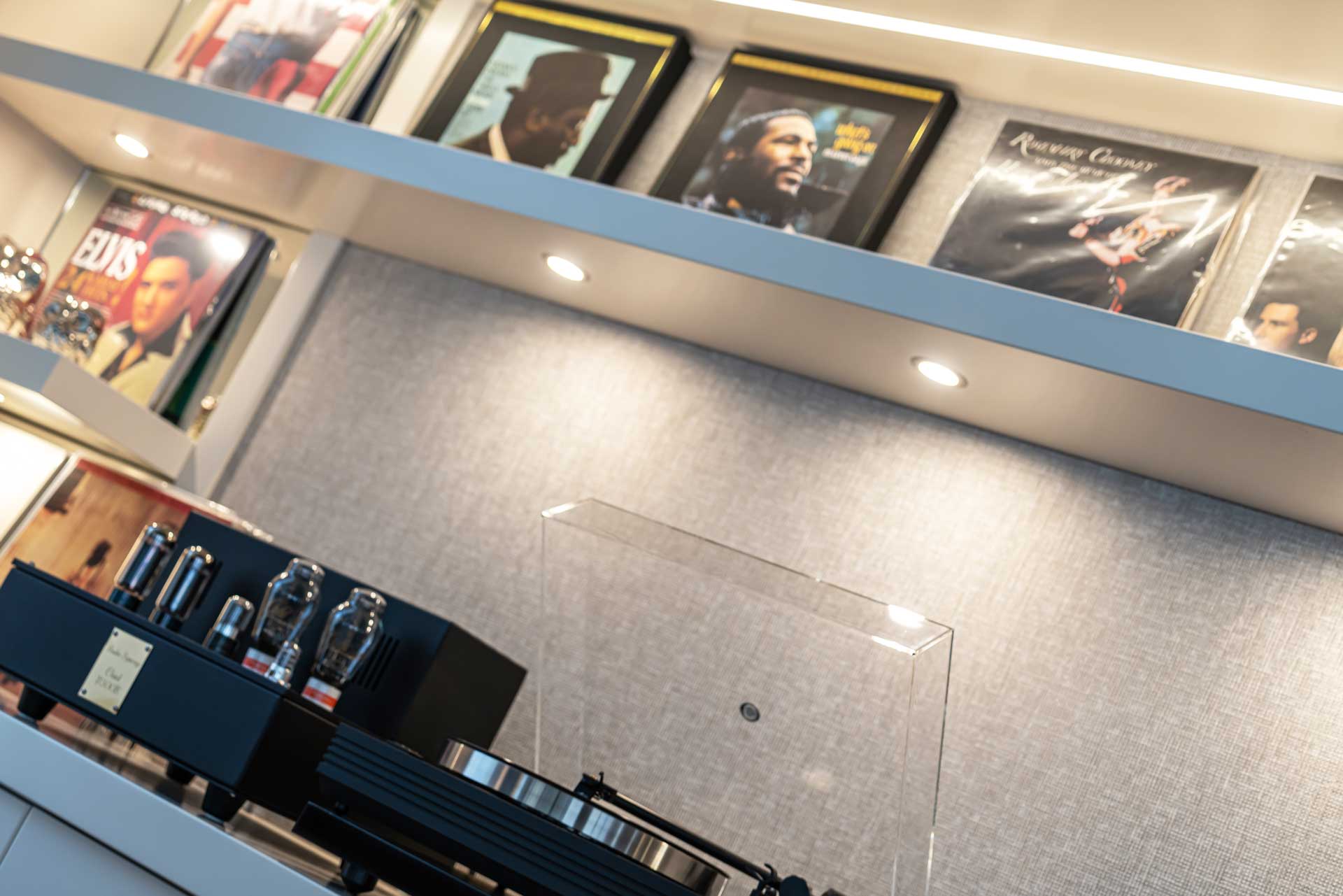
For reasons of client privacy and sensible anonymisation, we often interview only the installers of the systems we feature in Sound+Image, but on this occasion we were delighted to hear also from the owner, who filled in more details of his hi-fi history and the room design.
On the system...
"I started my journey in hi-fi over 20 years ago, and have owned many systems since. For most of that time I played CDs, and I consequently built up a sizeable CD collection. In the last few years, however, I became increasingly interested in exploring streaming options, as I had heard from various sources that the audio quality of streamers was improving rapidly, and that streaming quality would equal CD quality at some time in the near future.
"I started my streaming journey by listening to Spotify on my Sonos system. What I enjoyed about streaming music was the tremendous ease of operation, and the convenience by which one could access millions of music tracks.
"However, the audio quality remained somewhat disappointing compared to CDs and vinyl, and I therefore tended to listen to streaming mainly whilst in my car, or on my Sonos system as background music.
"Mid last year, I visited Frank Prowse to have a listen to some more advanced streamers, to learn more about the technology and get some guidance on how to integrate a good quality streamer into my main hi-fi system. The highly knowledgeable team at FP explained the many options available and introduced me to dCS.
"I already had a good quality tube DAC from Audio Synergy and after hearing the streamer from dCS I decided to take the plunge and buy the streamer. I was very impressed with the dCS streamer in my system. However, after a few weeks I realised that my DAC (which was nearly 10 years old) was limiting my ability to explore the full potential of the dCS, which offered many digital options including MQA files.
"I subsequently decided to upgrade my DAC and the most straightforward option was to consider the dCS Bartók (which I had heard in the shop and just blew me away, as it was the closest I had heard to CD quality). I have been extremely impressed with the sound quality of the dCS Bartók, to the point where I am now actively considering selling my CD transport and all of my CDs, as I struggle to hear any difference between CDs and the Bartók.'
On the room...
"I always took the view that the audio experience should be able to be enjoyed by the entire family. As such, we asked Butler Interiors to design a bespoke entertainment unit that would allow us to integrate the hi-fi equipment into the main living room, while hiding most of the cables and equipment that should be heard but perhaps not seen.
"We also wanted to keep the existing fireplace in the centre of the living room, and as such we decided to have the hi-fi equipment on the side, with the speakers left and right of the fireplace.
"This is clearly unorthodox, as the view generally is that both speaker cables should be the same length, but after consultation with a number of hi-fi experts and enthusiasts, we decided to take the risk, and I was advised to mitigate potential issues associated with using different lengths of speaker cable by using pure silver cables instead of copper. I am pleased to say that it is very difficult to discern any difference between the left and right speakers.
"We do also have a dedicated movie theatre room in the house, which has
full surround sound, but that is only used for watching movies. The remaining Sonos system is located in the outdoor veranda area, which is used mainly for entertaining."
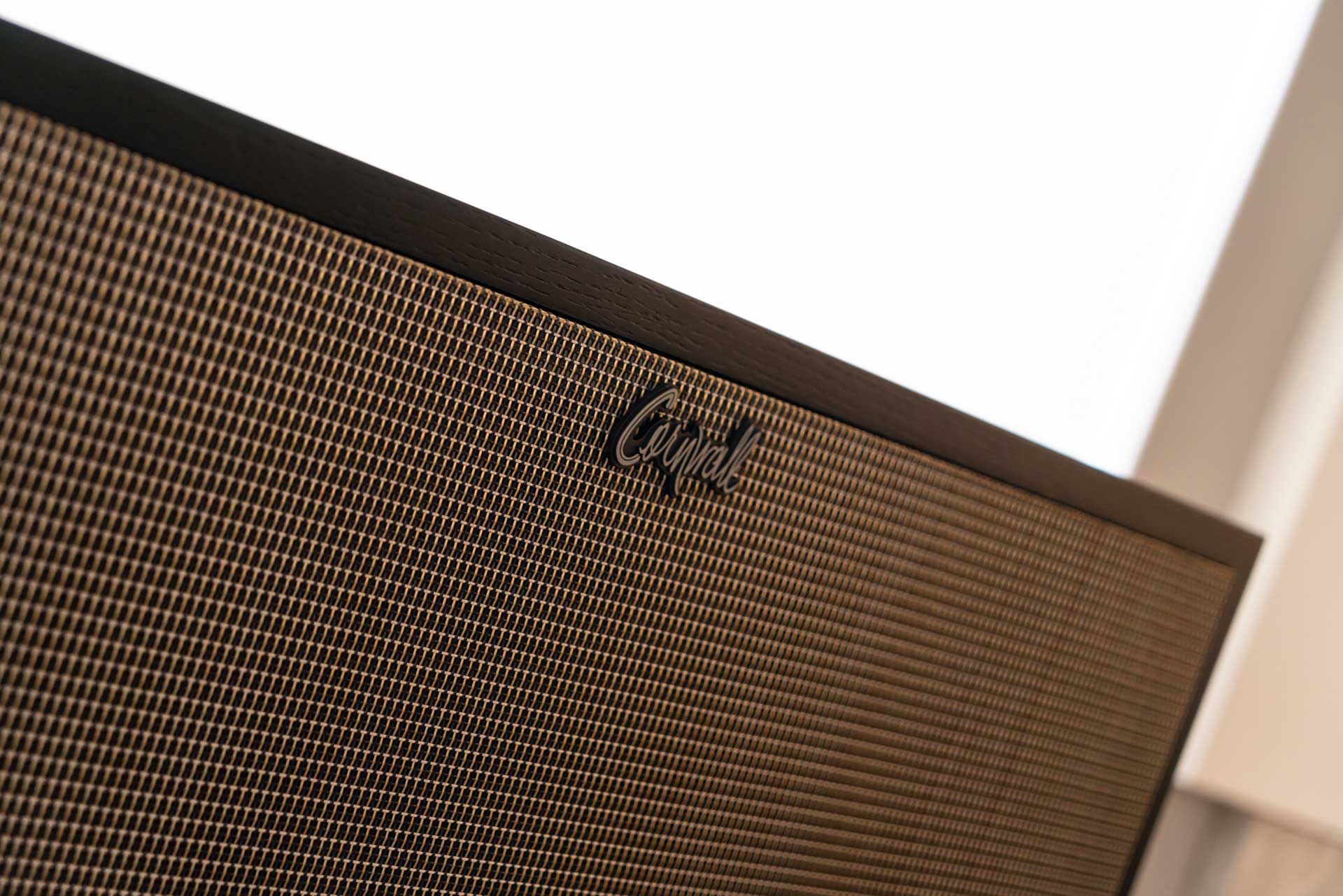
Mober turntable
Linn Ekos tonearm with VDH tonearm cabling
Ortofon Cadenza Black cartridge
Lite Audio LT-One CD transport
RCM Audio Sensor 2 phono preamplifier
dCS Bartók DAC/streamer with Nordost power cable
Roon Nucleus music server
Audio Synergy valve pre-amp
Audio Synergy Chad P300B monoblocks power amplifiers (upgraded silver wiring and V Caps)
Klipsch Cornwall IV speakers
Audio Synergy solid silver speaker cables and silver interconnects
Nordost interconnects and power cables
IsoAcoustics isolation platforms
Butler Interiors cabinetry
DESIGN & INSTALLATION
Frank Prowse Hi-Fi
Sound+Image is Australia's no.1 mag for audio & AV – sister magazine to Australian Hi-Fi and to the UK's What Hi-Fi?, and bestower of the annual Sound+Image Awards, which since 1989 have recognised the year's best hi-fi and home cinema products and installations. While Sound+Image lives here online as part of our group, our true nature is best revealed in the print magazines and digital issues, which curate unique collections of content each issue under the Editorship of Jez Ford, in a celebration of the joys that real hi-fi and high-quality AV can bring. Enjoy essential reviews of the most exciting new gear, features on Australia's best home cinemas, advice on how to find your sound, and our full Buying Guide based on all our current and past award-winners, all wrapped up with the latest news and editorial ponderings. Click here for more information about Sound+Image, including links to buy individual digital editions and details on how best to subscribe.
